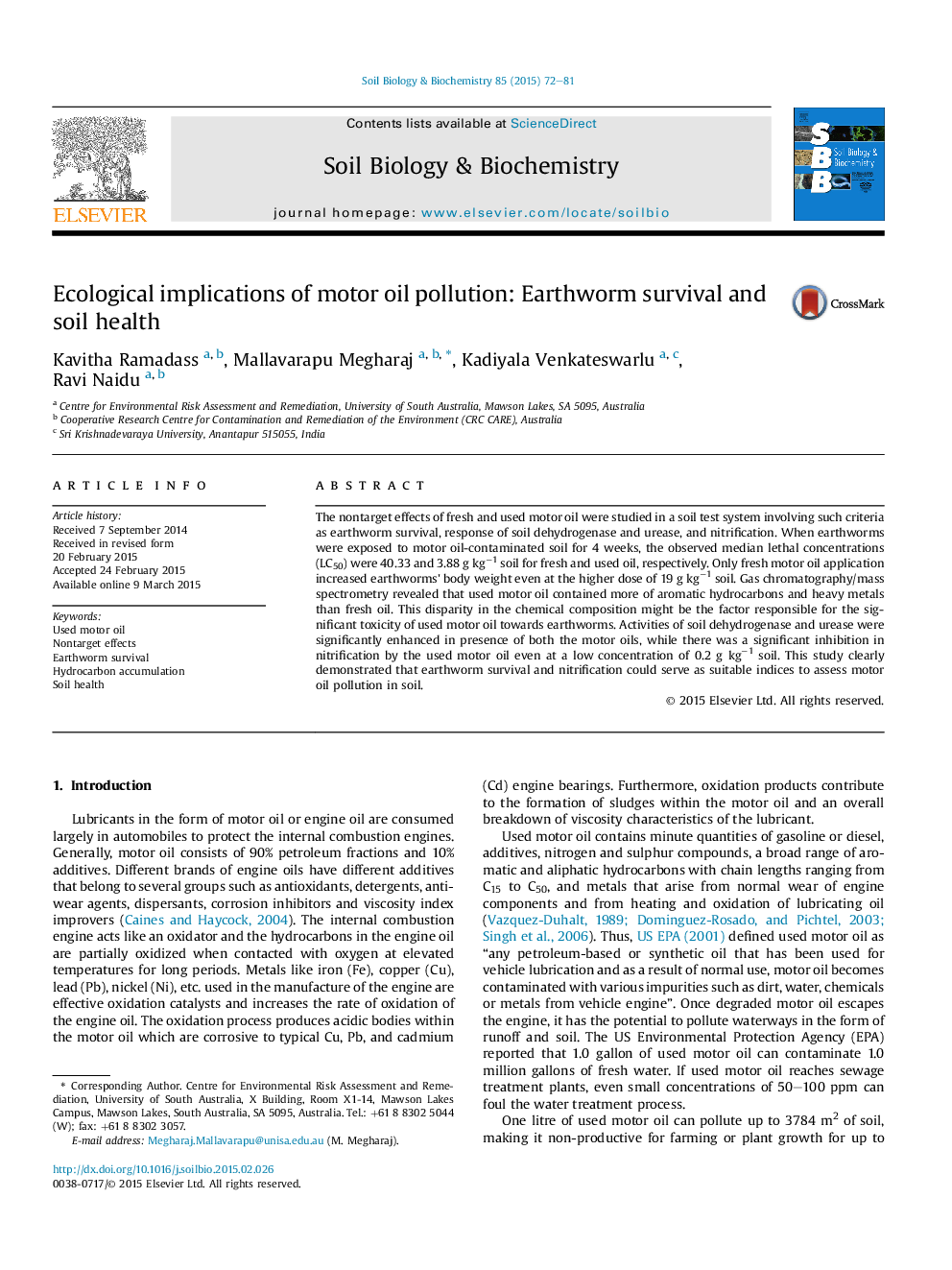| Article ID | Journal | Published Year | Pages | File Type |
|---|---|---|---|---|
| 8364168 | Soil Biology and Biochemistry | 2015 | 10 Pages |
Abstract
The nontarget effects of fresh and used motor oil were studied in a soil test system involving such criteria as earthworm survival, response of soil dehydrogenase and urease, and nitrification. When earthworms were exposed to motor oil-contaminated soil for 4 weeks, the observed median lethal concentrations (LC50) were 40.33 and 3.88 g kgâ1 soil for fresh and used oil, respectively. Only fresh motor oil application increased earthworms' body weight even at the higher dose of 19 g kgâ1 soil. Gas chromatography/mass spectrometry revealed that used motor oil contained more of aromatic hydrocarbons and heavy metals than fresh oil. This disparity in the chemical composition might be the factor responsible for the significant toxicity of used motor oil towards earthworms. Activities of soil dehydrogenase and urease were significantly enhanced in presence of both the motor oils, while there was a significant inhibition in nitrification by the used motor oil even at a low concentration of 0.2 g kgâ1 soil. This study clearly demonstrated that earthworm survival and nitrification could serve as suitable indices to assess motor oil pollution in soil.
Related Topics
Life Sciences
Agricultural and Biological Sciences
Soil Science
Authors
Kavitha Ramadass, Mallavarapu Megharaj, Kadiyala Venkateswarlu, Ravi Naidu,
